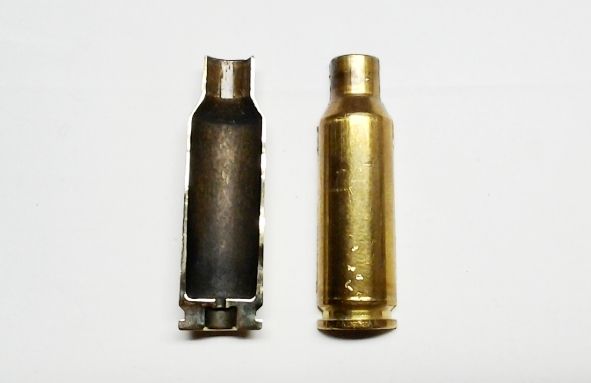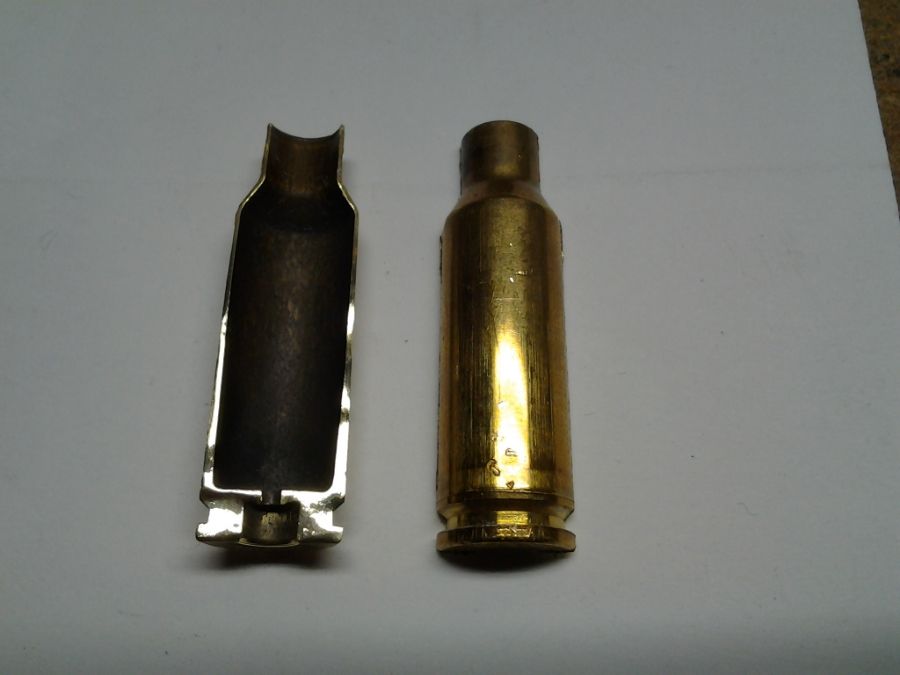I have been shooting a 6mm ARC on and off for the past year or so. I profiled and chambered the barrel (22” Wilson w/rifle length gas), installed the extension and threaded the muzzle. The rest of the parts are reasonable quality parts and appropriate to the build. MUR Vltor upper and lower, JP bolt and Tubb flatware buffer spring. I am using a hydraulic buffer.
I’ve been shooting Hornady brass, both 6mm ARC head stamped and 6.5 Grendel head stamped that I resized. I am using a Superlative Arms AGB and have been shooting suppressed with a TBAC Ultra 9 suppressor with NO problems. I am using Hornady sizing and seating dies.
Recently I got an OSS HX QD suppressor and shot 20 or rounds of my hand loaded ammo using Hornady cases. I made no changes to the AGB and encountered no problems.
Flash forward to this weekend. I am going to be honest even though it will likely cast some doubt about judgement when it comes to reloading.
I had some virgin 6.5 Grendel brass that I reformed to 6mm ARC specifications. I measured and tested this brass before loading it to make sure it cycled normally with and without a projectile - no problem.
Here comes the judgement part - I did use a full-house load of Leverevolution with 108 ELD-Ms — not over book value but 29.4 grains. There was more neck tension than with the hornady brass but nothing outrageous - would estimate 5-7 thou of neck tension. All bullets seated to the exact depth I selected +/1 .001. Most were perfect.
Using a Labradar the MVs were an exact match for the Hornady brass with the same load — 2740 FPS. I was using a brass catcher and as the rifle was performing normally I didn’t look at the brass until I had shot 5 groups of 5.
First, I was shocked to see this - heavy swipes and ejector flow on each one:

But that was nothing compared to what I saw next:
 Very lucky that the day didn't end in catastrophe!
Very lucky that the day didn't end in catastrophe!
So, what does this mean? I don't normally load full power loads in virgin brass but is that the issue here? I wouldn't think so. It seems like the bolt is unlocking while there is still significant pressure in the chamber. The new suppressor has fixed all the gas-in-the-face issues and unfired rounds in the magazine no longer have the heavy carbon dusting as when using the Ultra 9 suppressor. In fact they are as clean as they were when inserted. So, it seems like blowback is greatly reduced.
As you weigh in with your thoughts, I have shot over 1000 rounds of this same load using Hornady brass at a very similar MV. Yes there are some swipes on the Hornady brass but they are more like bright spots rather than gouges and have not caused any function issues or premature pocket enlargement. I get about 7 reloads out of the Hornady--it just happens to not be available at this time.
Lastly, I was very careful with the chamfer of the chamber. It is very lightly chamfered and the headspace is set correctly.
Help wanted....
Thank you,
Hank
I’ve been shooting Hornady brass, both 6mm ARC head stamped and 6.5 Grendel head stamped that I resized. I am using a Superlative Arms AGB and have been shooting suppressed with a TBAC Ultra 9 suppressor with NO problems. I am using Hornady sizing and seating dies.
Recently I got an OSS HX QD suppressor and shot 20 or rounds of my hand loaded ammo using Hornady cases. I made no changes to the AGB and encountered no problems.
Flash forward to this weekend. I am going to be honest even though it will likely cast some doubt about judgement when it comes to reloading.
I had some virgin 6.5 Grendel brass that I reformed to 6mm ARC specifications. I measured and tested this brass before loading it to make sure it cycled normally with and without a projectile - no problem.
Here comes the judgement part - I did use a full-house load of Leverevolution with 108 ELD-Ms — not over book value but 29.4 grains. There was more neck tension than with the hornady brass but nothing outrageous - would estimate 5-7 thou of neck tension. All bullets seated to the exact depth I selected +/1 .001. Most were perfect.
Using a Labradar the MVs were an exact match for the Hornady brass with the same load — 2740 FPS. I was using a brass catcher and as the rifle was performing normally I didn’t look at the brass until I had shot 5 groups of 5.
First, I was shocked to see this - heavy swipes and ejector flow on each one:
But that was nothing compared to what I saw next:
So, what does this mean? I don't normally load full power loads in virgin brass but is that the issue here? I wouldn't think so. It seems like the bolt is unlocking while there is still significant pressure in the chamber. The new suppressor has fixed all the gas-in-the-face issues and unfired rounds in the magazine no longer have the heavy carbon dusting as when using the Ultra 9 suppressor. In fact they are as clean as they were when inserted. So, it seems like blowback is greatly reduced.
As you weigh in with your thoughts, I have shot over 1000 rounds of this same load using Hornady brass at a very similar MV. Yes there are some swipes on the Hornady brass but they are more like bright spots rather than gouges and have not caused any function issues or premature pocket enlargement. I get about 7 reloads out of the Hornady--it just happens to not be available at this time.
Lastly, I was very careful with the chamfer of the chamber. It is very lightly chamfered and the headspace is set correctly.
Help wanted....
Thank you,
Hank









